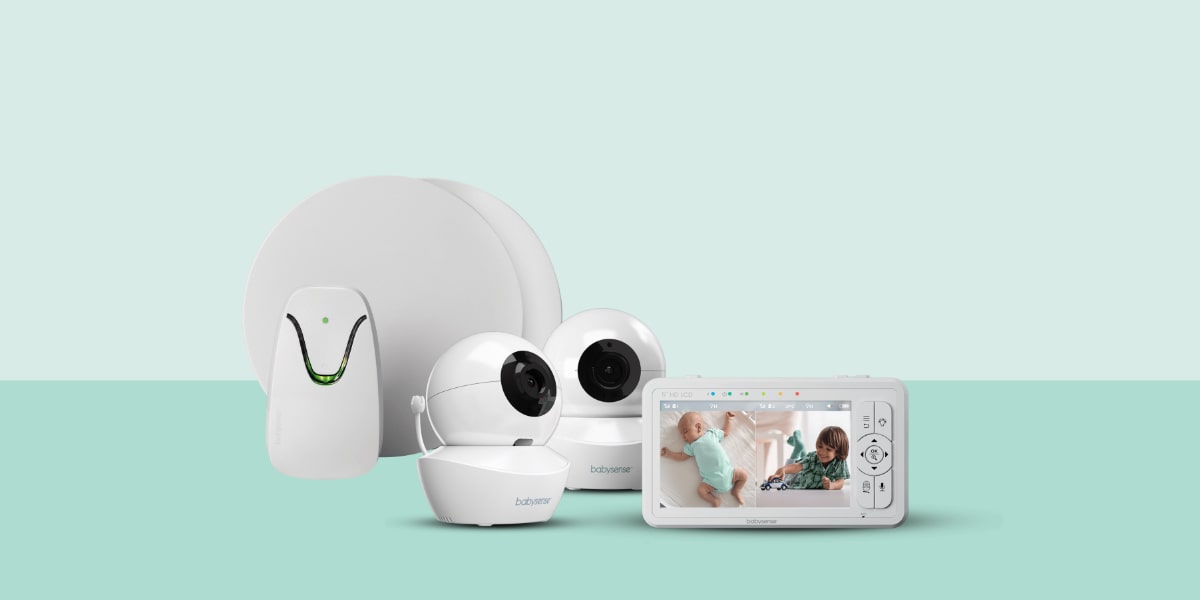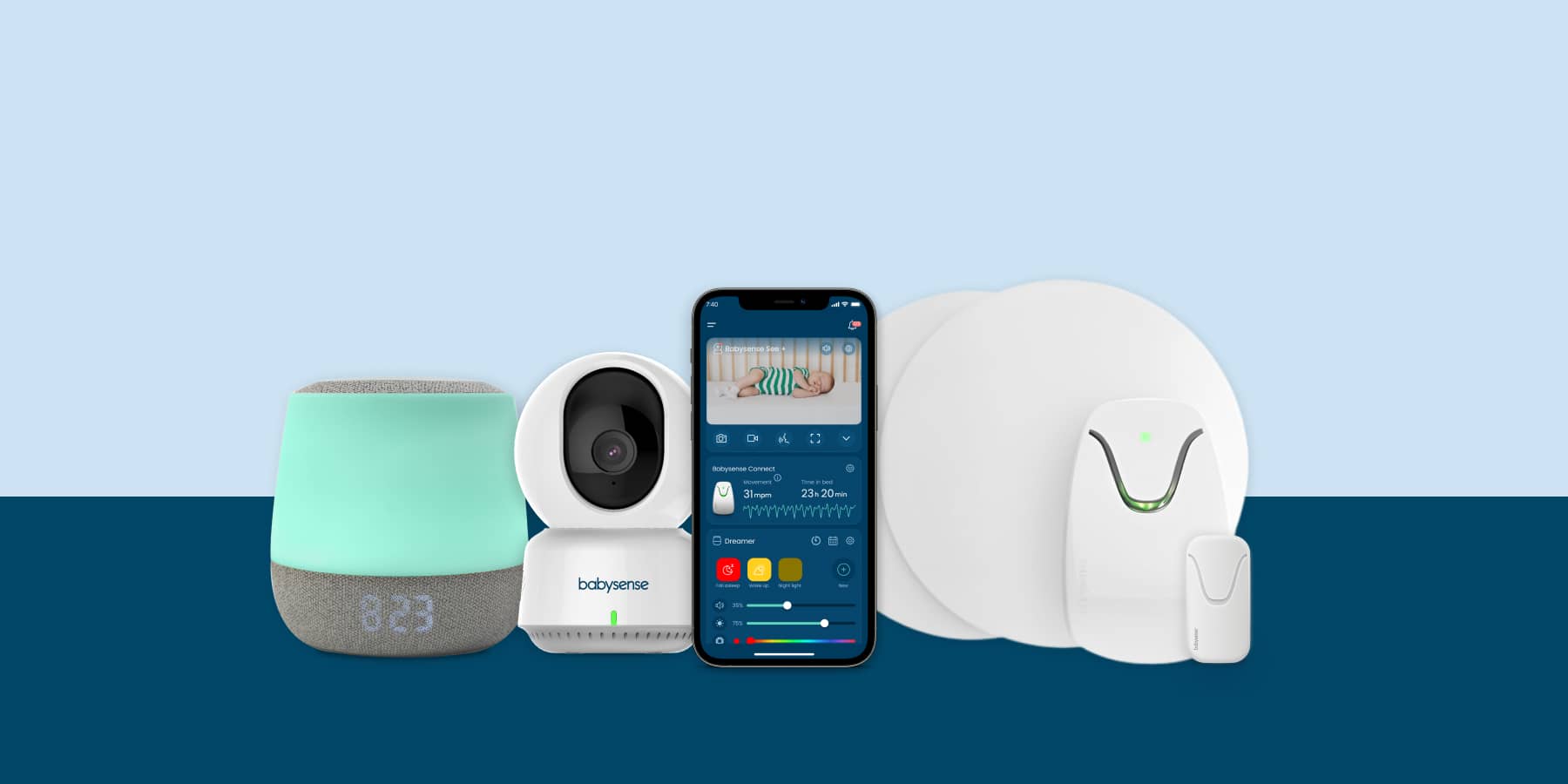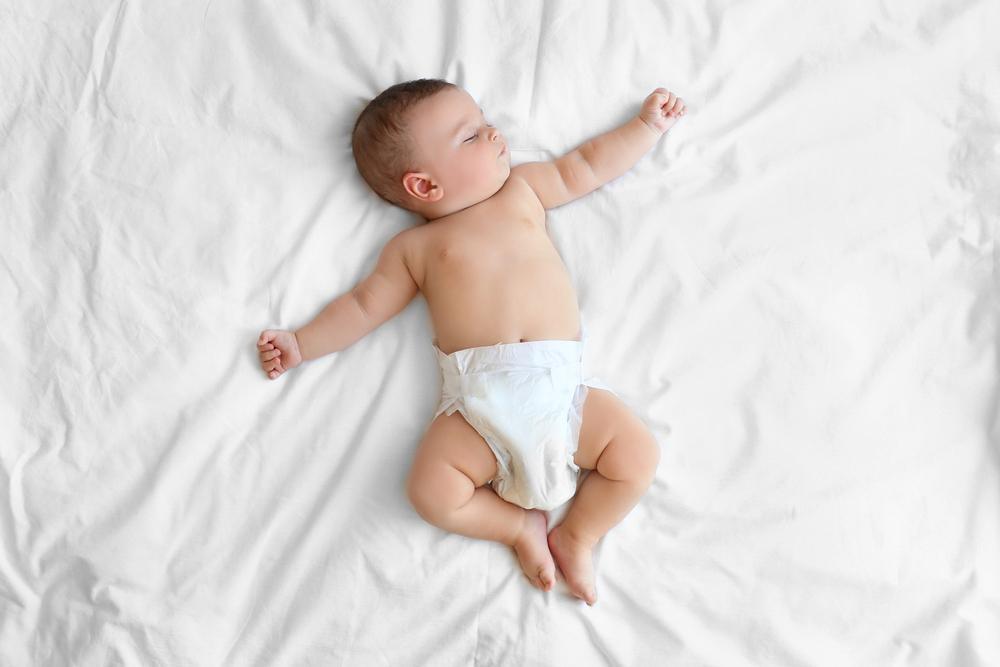As a new parent, your main goal is to keep your baby healthy and safe. You may have many concerns, including the terrible potential of sudden infant death syndrome (SIDS).
Research shows proper sleeping positions can help to reduce the occurrence of SIDS. Knowing the safe way to put your baby to sleep may have questions swarming about your head. One of which may be “can babies sleep on their side.”
According to the American Academy of Pediatrics, the only safe way to put a baby to sleep is on their back. Other sleep positions increase the risks for SIDS or other injuries to your baby.
Side Sleeping Is No Longer Ok
For a while, experts did say side sleeping positions were acceptable for babies. This is why there is some confusion and why you may ask, “can babies sleep on their side.”
The prevailing guideline today is to avoid side sleeping. Doctors and other experts now only recommend back sleeping positions for babies who are one year and younger.
There are sound reasons behind this recommendation. In addition, safe sleep guidelines include a lot of additional advice that you should understand.
A proper sleeping position and environment can protect your baby from suffocation, injuries, and the most significant risk, SIDS.
SIDS and the History of Sleeping Recommendations for Babies
While sleeping safety for infants is essential due to many different factors, sleep concerns exist mainly due to the risk of SIDS, as it is the most prevalent problem in babies.
Understanding the condition and the history of infant sleep research can help you understand why pediatricians and other experts continue to recommend placing a baby to sleep only on their back.
SIDS Explained
SIDS is a condition where a child under the age of one suddenly dies with no apparent cause. Even after an autopsy and complete investigation, there is no identifiable reason for the death besides SIDS.
It most often occurs while a baby is asleep, which is why some people refer to it as crib death. Generally speaking, SIDS occurs when an infant stops breathing. The lack of oxygen leads to death. It differs from suffocation because there are no known causes.
The Mayo Clinic explains even though the cause of SIDS is unknown, some suggested links could explain why it occurs. Experts think defects in the brain that control breathing and sleep arousal and environmental factors are likely the culprits.
Boys are more likely than girls to die from SIDS, and it most often occurs between the ages of two and four months. It happens more often to babies of color, and there is a genetic link increasing the risk of SIDS for family members of children who died from it. Finally, premature babies and those who live with smokers have an increased risk.
Recommendations for safe sleeping can help to reduce the risk of SIDS based on studies lasting decades. These protocols help to reduce the things within the environment that studies show can lead to the condition.
National Campaigns for Infant Sleep Safety
The national campaign for infant sleep safety, known initially as Back to Sleep, has a long history. It involves studying SIDS and making adjustments to recommendations to reflect the findings. Researchers and experts have worked hard to study SIDS and figure out the safest way for babies to sleep.
Scientists discovered and named SIDS in 1969. The US Department of Health and Human Services notes the government created the Sudden Infant Death Syndrome Act of 1974 to help research the condition and find ways to protect babies.
Sleeping Recommendations for Babies
From 1988 to 1994, the recommendation for sleep position was on the side or back. In 1994, the US Surgeon General issued a policy that parents should always place children on their side or back to sleep, and this is also the year the government launched the Back to Sleep campaign.
Starting in 1996, research started leaning towards back sleeping positions as being the safest option. Studies began revealing that side sleeping was just as risky as stomach sleeping, so recommendations changed again. The final recommendation, which is still in place, is to always put babies on their back for sleeping.
In 1999, experts began adding additional recommendations, including no soft bedding or loose blankets in cribs. The Back to Sleep campaign began altering its message to reflect the new research.
In 2012, the campaign extended to include new recommendations against co-sleeping and changed the name to Safe to Sleep. Since then, there have not been changes to the recommendations or the Safe to Sleep campaign.
Back sleep positions seem to be the final ruling when it comes to keeping babies safe from SIDS.
The only additions to the protocols have regarded the sleep environment, with some changes in co-sleeping recommendations and ways to keep baby warm without using blankets, such as using a sleep sack or swaddling.
Safe to Sleep Campaign Results
The Safe to Sleep campaign, initially known as the Back to Sleep campaign, has saved lives. The expanded program in existence today provides a range of tips on how to keep babies safe when they are sleeping.
Throughout its history, the campaign has helped drop the rate of SIDS deaths in the US by almost 50%. Despite the success, SIDS remains a severe risk to infants under the age of one.
It is the leading cause of death for this age group, which means parents must be diligent in protecting their children and following the safe sleep guidelines.
Education is the key to helping prevent SIDS. Many parents who lose their children to the condition do not understand safe sleeping guidelines and may never have had any education regarding SIDS and its risk factors.
Through the Safe to Sleep campaign, there has been an increase in education and resources for parents, especially lower-income individuals and those living in underserved communities where the SIDS risk is higher. Spreading the word about what you know can help other parents to ensure safe sleep for their babies.
Side Sleeping Risks and Recommendations
Side sleeping can be dangerous for your baby, and you should avoid ever putting your child down to sleep on their side. Instead, you always need to place the baby on their back.
There may be some very rare situations where your doctor may recommend side sleeping. You should only practice side sleeping under the guidance of a doctor. In most cases, doctors will try to figure out alternative options besides side sleeping since it does carry many risks.
Back sleeping is imperative until your child can easily roll him or herself from front to back without help. In general, you should encourage sleeping on their back until age one.
Risks of Side Sleeping
Healthline explains many people have concerns over back sleeping due to a misconception. Parents who are hesitant to put their children on their backs often have fears about choking, but research shows side sleeping is more dangerous when it comes to choking.
Studies have shown that side sleeping will not stop choking and could make it worse since it will twist and constrict the airway when the baby is asleep. When on their backs, babies’ airways are open, and their natural gag reflex will kick in if they were to spit up while asleep.
In addition to increasing the risk of choking, side sleeping can cause plagiocephaly, which is the development of a flat spot on the head. It also is a position where your child can move easily. When on the side, a baby can roll to their stomach. This is much more difficult to do when the baby is on its back.
Many parents will use supports in front and behind the child to hold them in the side sleeping position. This comes with risks of its own. These soft supporters pose a suffocation risk if your child moves during sleep.
Side sleeping may feel best for your child and be the baby’s preferred sleeping position, but as the parent, you should work hard to ensure your child goes to sleep on their back and stays in that position while sleeping.
How to Ensure the Proper Sleeping Position
It can be tough to keep your child on their back during sleep time. Some babies move a lot when asleep, and not every baby will like the back sleeping position.
If your child doesn’t prefer sleeping on their back, you will need to find ways to keep the baby in the correct position.
Swaddle Your Baby
Swaddling is a great way to keep your baby in the proper sleeping position. When swaddled, your baby has less ability to move. It is crucial, though, to ensure a secure swaddle as loose blankets increase the risk of SIDS.
Make sure you tightly wrap your baby (it should be snug and not excessively tight). This will provide a sense of security and comfort to the child, enabling deep sleep and preventing movement.
Keep in mind, you should only swaddle until your child begins rolling. If our child can move, swaddling becomes dangerous as it could trap your child on their stomach, making it impossible for them to roll back over.
Prop Up the Mattress
Make it hard for your baby to move out of their current position by propping up the mattress. You do not want to use any type of positioner inside the crib, but you can do it under the bed to encourage the proper sleeping position and prevent the baby from rolling around.
Do be cautious about doing this. Seek advice from your doctor if you feel this is necessary. You do not want to create a situation where your child could be hurt due to propping the bed.
You will still need to ensure safety when propping. This includes that the mattress is flat and the sheet fits tightly. You also need to be sure propping does not create areas between the bed and the crib railing where your baby could fall into.
Follow the Guidelines
Always lay your baby to sleep on its back. Do not compromise on this. If you consistently put your baby to sleep on their back, it will become routine. Your baby will eventually learn this is the proper way to sleep, which will help reduce the movement and turning during sleep.
Encourage Deep Sleep
Your baby likely moves in their sleep because they are not sleeping deeply. You should create the best sleeping environment. Make sure their room is dark and quiet. Only lay your baby in the crib when they are deep asleep.
Keep a Watch
You should have a video baby monitor in the room that allows you to see your baby. You can check on the baby occasionally to ensure they are in the correct sleeping position. If you notice the baby has moved, simply go in and move them.
Additional Safe Sleeping Recommendations for Babies
The Safe to Sleep campaign includes a variety of recommendations for how to put your baby to sleep safely. It goes beyond just ensuring the baby sleeps on their back.
Guidelines for safe sleep include a variety of dos and don’ts that you should understand as a new parent. You want to be diligent about ensuring your child is safe while asleep, which includes being up-to-date on the recommendations and avoiding outdated advice.
Things to Do
Use a flat and firm mattress in the baby’s crib
You want to ensure it fits snuggly in the crib so there are no spaces between the bed and the side of the crib where the baby could fall in. You also want to use a tight sheet on the mattress that fits securely without leaving excess fabric.
Don’t feel bad about having your child sleep in your room. You can set up the nursery as you wish and even use it for naps, but consider having a bassinet in your room where the baby will sleep at night.
You should not put the crib near curtains or wall coverings that could get into the sleeping area.
You may worry about your baby getting too cold, but as long as you keep your home at a suitable temperature, this is not likely. You want to keep bed clothing light and ensure it fits securely.
Research shows babies who use pacifiers have a lower risk of SIDS. Put your baby to bed with it, but avoid using any type of device that attaches the pacifier to your child. It is ok if it falls out when your baby goes to sleep.
Things to Avoid
Don’t share your bed with your baby or hold the baby while you are sleeping
It is common for parents to fall asleep while putting their babies to sleep, but it is also hazardous. The baby could fall and end up between you and the mattress. There is also the potential that you could roll over on the baby when sleeping.
Overheating has a link to SIDS. You want the room to be comfortable without being too hot. Pay attention to signs your child is too warm when asleep, such as sweating.
Consistency is key to keeping your baby safe. Always make sure they are in a proper sleeping device. Never let your baby sleep in a car seat or swing because the position of their body is not conducive to safety and could lead to suffocation.
Soft surfaces, blankets, stuffed animals, or pillows can all introduce suffocation risks. You can add such items to the bed once your baby is one year old.
Wrapping Up
Can babies sleep on their sides? The answer is they cannot if you want to reduce the risk of SIDS. Side sleeping is as dangerous as stomach sleeping.
The general recommendation for safe sleep is always to put a baby to sleep on their back only. Make sure the bed is free of anything loose, including blankets. Never use positioners or allow anything in the crib with the baby.
Side sleeping was once a recommended sleeping position, but research shows that is no longer the case. It is outdated information to believe side sleeping is ok. Always put your baby to sleep on the back until they are at least one year old.









